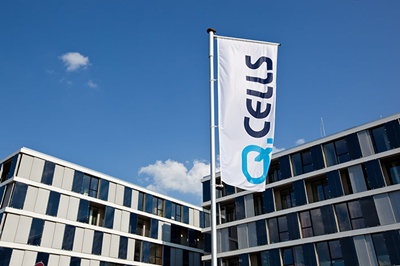13 May 2011
Sales fall sharply at the major German cell and module manufacturer, due to both seasonal effects and weakness in Italy and France.
Revenues at Q-Cells, one of the world’s top-ten solar cell manufacturers, fell sharply in the first three months of 2011, to €125.1 million.
The figure represents a 46% year-on-year drop for the Bitterfeld-Wolfen firm – resulting partly from the normal seasonality of the key German market, but also because of ongoing uncertainties over subsidy programs in other parts of Europe. Some exceptional systems sales in the early part of 2010 also skewed the figures.
“In the photovoltaic sector, demand in the first quarter of the year is always low,” said Q-Cells CEO Nedim Cen. “The lack of governmental decisions in France and Italy, two of the most important markets worldwide, which led to very low sales in the entire sector, added to this unfavorable situation.”
2010 was a bumper year for cell manufacturers, as customers rushed to install PV capacity in advance of widespread reductions in feed-in tariffs and other support schemes across Europe. But that rush has also meant a stockpile of cells building up, with Q-Cells and other manufacturers having to carefully manage their production volumes.
At the same time, the price of raw materials such as polysilicon has remained stable, despite the weaker overall demand, squeezing cell manufacturers. Although demand is expected to pick up through the rest of 2011 as new support mechanisms are rolled out, Cen said that any forecast for 2011 “remains fraught with uncertainties”, with the likely impact on prices especially difficult to predict.
According to analysts at the clean technology consultancy firm Lux Research, the price of polysilicon is the single most important factor in determining cell manufacturing costs. And research director Mike Holman says that the large investment and time lag involved in scaling up production volumes means that cell producers will have to live with relatively flat material costs for the next few years – whatever the market demand.
Sales optimism
In his report on the first quarter results, Cen confirmed that raw material prices had been stable, but that silicon wafer prices had begun to decline as a result of the sluggish market demand. Despite the slowdown, he still thinks that 2011 will be a strong year overall:
“Our target to achieve the same level of revenues as the previous year can be reached, provided that market demand increases in the second half of 2011,” said the CEO.
Like other top-ranking cell and module companies such as First Solar, Q-Cells is working to become less dependent on the core European markets that have largely driven the global PV industry growth so far, and tap into what is expected to be strong growth in the US, China and the Middle East over the next five years.
After expanding last year, Q-Cells now has an annual cell production capacity of 1.1 GW (peak), and cell production in the first quarter was 284 MW (peak). However, the slack market demand meant that the company only sold 84 MW (peak) of crystalline silicon cells, and another 7 MW (peak) in the form of modules.
Q-Cells was ranked as the fifth-largest cell producer in 2010 by Photon Consulting, and the company’s subsidiary Solibro is also among the top-five producers of thin-film modules – although First Solar’s sales of CdTe products dwarf those of its rivals in this sub-sector.
Over the past 12 months, the Solibro division has tripled its manufacturing capacity to 135 MW (peak), and in the opening quarter of 2011 it produced 29 MW (peak) of modules, although it only sold 8 MW (peak).
Dealing with the sudden changes in market demand will be made even more testing for Q-Cells following the recent departure of COO Gerhard Rauter, whose duties will be taken on by CEO Cen in the short term.

Production forecast cut
The situation in Italy has been particularly challenging, with demand halted in the first quarter because of uncertainty about government support for the country-s feed-in tariff beyond the end of May 2011. Follow-up regulations have now been approved, with construction of large installations capped for the next two years, although the much more complex nature of the new support structure is making it difficult to forecast future demand, Q-Cells believes.
With the build-up of inventory in the first three months of 2011, Q-Cells has slowed production, released temporary staff, and implemented its flexible working regime to move permanent staff out of production roles. “Q-Cells will use the second quarter of 2011 for carrying out tests to improve production processes and to train its employees,” said the company. “Once demand increases again, it will be possible to quickly [raise] production output.”
But the second-quarter shutdown will have a major impact on annual production volumes, which are now expected to be approximately 900 MW (peak), down from just over 1 GW (peak) last year. Production of thin-film modules should continue as normal and reach about 100 MW (peak) for the year, up from 75 MW (peak) in 2010.
| © 2025 SPIE Europe |
|